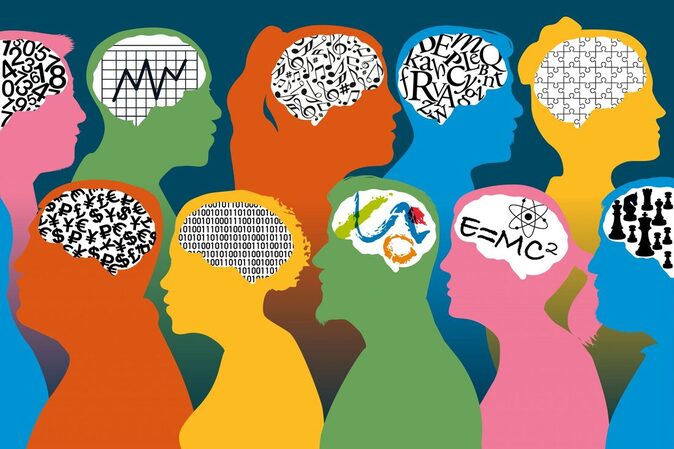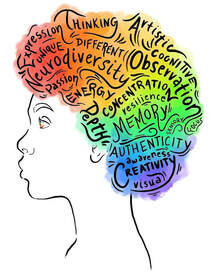Lauren HickmanClincial Intern Nova Mental Health Services is a queer-affirming clinic. Being up to date on current policies impacting the populations we serve is necessary. If we fail to keep up with criteria, changes in policy, and trends, we are failing to support our clients and maintain professional integrity.
There are currently hundreds of anti-trans bills, legislation that does not seek to understand but to control and regulate the bodies of others. The Informed Consent Model is one where patients can assess what is best for them within the constructs of a regulated system. Those regulations have existed since gender-affirming care became more available, starting in the 1970s with progressive physician, Harry Benjamin. He drafted the original standards of care for trans clients and those seeking medical intervention for HBIGDA (1979) the predecessor of WPATH - the World Professional Association for Transgender Health.
0 Comments
Lauren K. Hickman, 2023Clinical Intern at Nova MHS The term neurodiversity was coined in 1998 by Judy Singer. At the time she was an Australian sociology student, a mother to and a daughter of neurodivergent individuals. The revolutionary recognition that everyone’s brain develops uniquely has shifted the diagnostic narrative. No two brains, just as no two fingerprints, are alike.
As autism diagnosis has increased since the 1980s, there are heated debates about which came first: is autism increasing? or do we have better diagnostic criteria to recognize autism sooner? Written by: Ben MattsonClinical Intern & MSW graduate prospective This blog post discusses the correlation between connective tissue/hypermobility disorders and neurodivergent conditions, especially autism. Recent studies have found a similarity in manifestation of these conditions which exists on the genetic level. Connective tissue/hypermobility disorders can cause a variety of symptoms that have impact on such individuals, including both physical and mental health outcomes. Pain, restrictions, and challenges to quality of life related to physical health disorders can have great impact on an individual’s mental wellbeing, which can be even more difficult to manage if mental health conditions and features of given neurotypes also present life barriers.
It is important for therapists to be aware of these connections in their work with clients who are neurodiverse, especially if they have comorbid hypermobility, pain, or connective tissue disorders. Mental health professionals should understand the implications for what support these clients may need and would be well-suited to learn more about how these conditions can affect quality of life, both physically and mentally, to provide the most supportive care possible for this population. It could be argued that this is necessary to truly give trauma-informed care that is respectful to all neurotypes. One of the things we are most proud of here at Nova MHS is the fact that we are able to provide very specialized services. This is through having therapists who work under the general focuses of Nova MHS and then they are able to sub focus or specialize. To see what individual therapists focus or specialize on go to our page named, "meet us."
This article will go through the 4 main focuses of Nova Mental Health Services. The hope is this will give the reader a better idea of what we can offer. It is also important to note that we also provide services for a wide range of mental health diagnoses and reasons for seeking therapy. These 4 areas are just where we thrive, as are the individual interests and focuses of our therapists. The LGBTQ+ Community
While the LGBTQ community is still relatively small, as less than 5% of adults in the US identify as LGBTQ, that number cannot be considered definitive. It’s important to consider that twice as many millennials identify as part of the community as gen X’ers. Society’s continued growth in acceptance, the spread of education, and media representation no doubt help people define themselves in ways that older generations couldn’t. As the population grows, however, it becomes more important than ever to address mental health concerns around being a member of the community. PTSD and Trauma
The unfortunate reality of the world is that 70 percent of people will experience at least one traumatic event in their lifetime. Of those, at least a fifth will develop some form of post-traumatic stress disorder. Trauma comes from many experiences like war, violence and abuse, sudden loss, accidents, or natural disasters. Both experiencing it or even witnessing such events can lead to some level of trauma. It is a common misconception that PTSD is an issue only for soldiers. It is also not uncommon for people to believe something “doesn’t count” as a traumatic event for one reason or another. However, it is not for one person to define what trauma is or how things affect others. But because of these ideas, many people don’t reach out for help after such events. Neurodiversity is often referred to as “invisible disabilities.” This term umbrellas Autism, Attention Deficit Hyperactivity Disorder (ADHD), Tourette's Syndrome, Dyslexia, and many others. An estimated 15% to 20% of the world’s population falls into this category, however, as we learn more about Neurodiversity this number could grow.
We do not treat neurodiversity as it is not a disorder but a neurological classification. This season can be a stressful time for anybody. Financial stress alone can be a heavy burden, not to mention the socio-political issues and complex feelings some have around the holidays. And on top of all that, visiting family feels almost like a non-negotiable event for many of us. But we live in a very divided time; generational and political differences can be very stark. Family gatherings during the holiday can force those people to clash against each other and cause anger and bitterness.
As we become more educated and aware of what it actually means to be Autistic or ADHD, we are seeing more and more people meeting the criteria for these Neurological classifications. Specifically a lot of older teens and adults are learning that they are Neurodivergent. As individuals start to suspect they are neurodiverse, they do what most people do when they are curious about something… they google it. They may find themselves taking online questionnaires and then confused because perhaps they identify a lot with Autism… and then ADHD… and then maybe a few mental health disorders sprinkled in there… So which one is it???
|
Archives
June 2024
Categories |
Proudly powered by Weebly
Copyright © 2022











 RSS Feed
RSS Feed